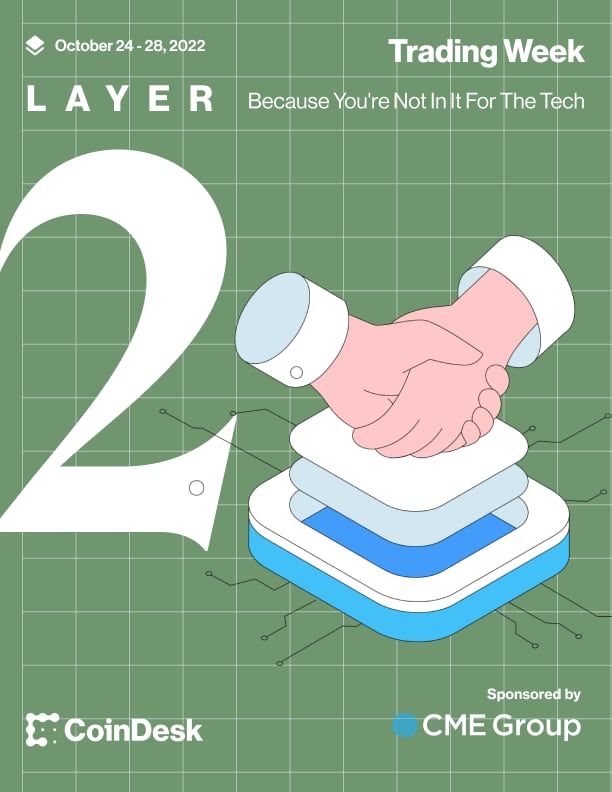Traders have access to a variety of trade types that help them take advantage of volatility or protect them from market shocks. This article explains the four main order types for spot trades – limit, market, stop and instant – to help you make an informed decision while trading cryptocurrencies.
This article is part of CoinDesk's Trading Week.
Sign up for CoinDesk’s Learn Crypto Investing Course.
Market order
Market orders are standard crypto trades. It’s a simple command to buy or sell a cryptocurrency at the best available price on that exchange. In practice, that means buying or selling a cryptocurrency at its most recent price. So if the most recent bitcoin trade valued the coin at $20,000, the exchange’s market price is $20,000.
An exchange’s order book is really just a long, constantly updated list of buyers and sellers. As such, the market price is always being updated and represents the freshest price of a cryptocurrency on that exchange.
Market orders, also known as spot orders, are the easiest orders to implement on an exchange and are executed almost instantly. All you have to do is enter how much cryptocurrency you would like to buy or sell. Then the exchange will match you with an open order in the order book.
As you are taking liquidity out of the order book, you will be subject to what exchanges call a “taker fee.” Limit orders (explained below) are subject to lower maker fees.
The price of a cryptocurrency may vary across exchanges. This is because each exchange maintains its own market for cryptocurrencies. However, market prices for major cryptocurrencies rarely vary much across exchanges. A select group of traders, known as arbitrageurs, profit by taking advantage of minor price differences across exchanges. This crypto arbitrage trading smooths out price differences quickly.
Instant order
Instant orders are fairly interchangeable with market orders. The only difference, if any, is that instant orders involve exchanges of fiat currencies, like the U.S. dollar, for cryptocurrencies, while market orders are denominated in cryptocurrencies.
When placing an instant order to, say, buy $10,000 worth of bitcoin, the exchange seeks out sellers to fulfill your trade. Your trade might come from multiple sellers; the exchange will keep plugging away at your trade until your trade has been completely matched, with each tranche executed at the current market price of the cryptocurrency.
Limit order
Limit orders let you place an order to buy or sell cryptocurrencies at a certain price. You’ll have to tell the exchange how much you want to buy or sell and the limit of the price you’re willing to accept.
For instance, you might place a limit order to buy one bitcoin for $20,000, but no more. That’s useful if you predict that the price of bitcoin will fall to $20,000, and want to buy the coin as soon as it reaches your preferred price. Alternatively, you might place a limit order to sell one bitcoin for no less than $21,000. That’s useful if you want to sell bitcoin as soon as the price of BTC reaches $21,000.
The advantage of limit orders is they allow buyers or sellers to trade at their preferred price without constantly scanning the market. This allows them to take advantage of price swings while not being glued to their screens 24/7.
The downside is these orders are not guaranteed to execute, and may never go through if the cryptocurrency never reaches a certain price specified in the limit order. Yet, as mentioned above, they are often cheaper to execute as the “maker fee” for these trades is lower than the “taker fee.”
Stop-loss and stop-limit orders
Stop orders are orders that activate once a specified price, known as a stop price, has been met. So if you placed a stop order to buy bitcoin at $20,000, once bitcoin hits that price the order becomes a market order to buy bitcoin.
These orders are not visible to the market until that price point has been reached. However, the risk is they may fill at a price higher than you wanted to pay.
For instance: You enter a stop order to buy bitcoin as soon as it reaches $20,000, but because of a sudden jump in price or a huge backlog of orders it ends up being fulfilled at $21,000.
More commonly you’ll see people set a trigger for a stop loss order, which triggers a sell order when the asset crosses that line at the next available price. So you can put in a stop-loss order to sell bitcoin if it crosses the $19,000 mark. But similar to the above example, it does not guarantee a price, and in a rapid sell-off or flash crash you could end up fulfilling your order at $18,000 or lower.
To compensate for this, consider the “stop-limit” order, which allows you to set a range – keeping with the stop-loss example, you can set a minimum price for which you’re willing to sell. So you can set the order to sell bitcoin at $19,000 but with a lower limit price of $17,000. If the price plummets below that $17,000 before your order is filled, your bitcoin would remain in your account, unsold. You can flip this and do the same and set a high range for a buy price, protecting you from paying more than you want to for an asset.
:format(jpg)/cloudfront-us-east-1.images.arcpublishing.com/coindesk/UB24D4HXTFA5LJUWERA5MFTGHY.jpg)

:format(jpg)/www.coindesk.com/resizer/tC_LnTt_nJp04-R0XjRI3TyITKA=/arc-photo-coindesk/arc2-prod/public/HF4VRUMSUZHQXNLQM3E3ONSBGY.png)